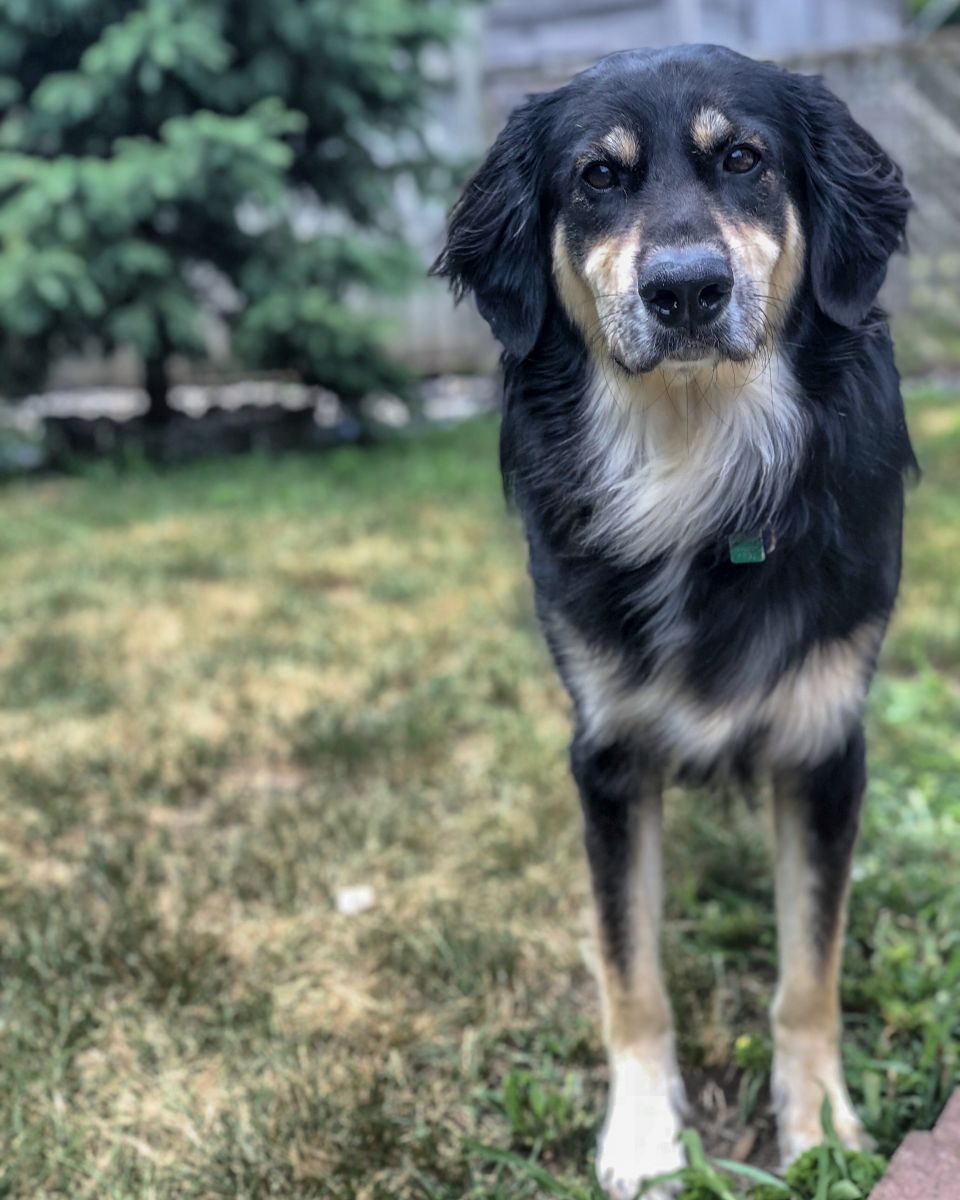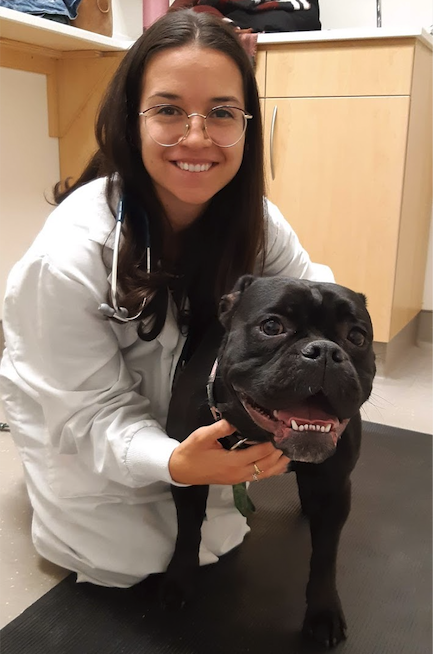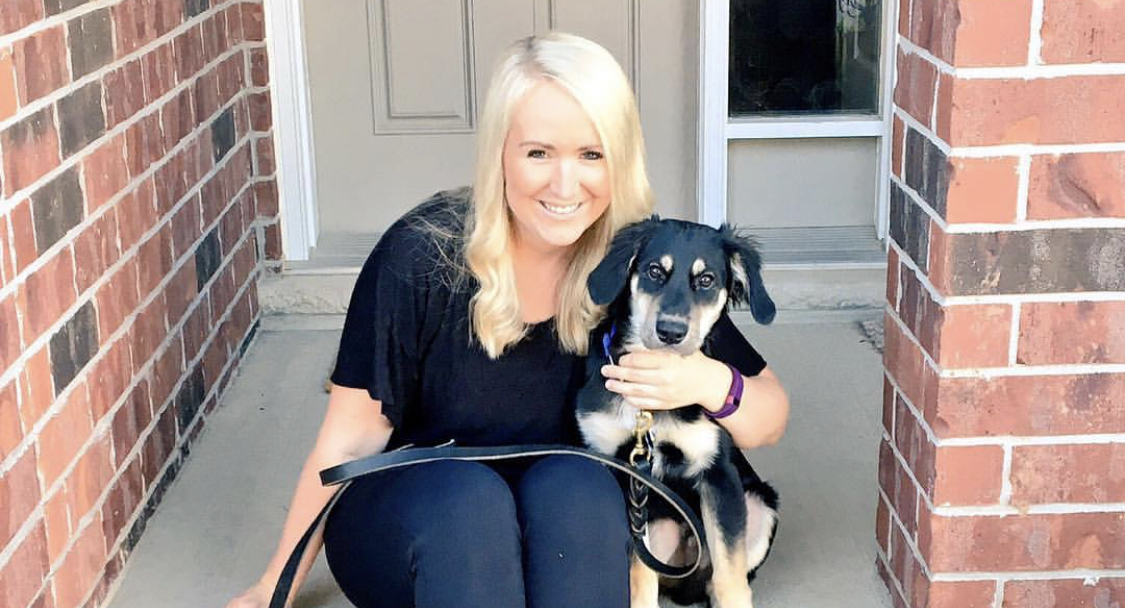Why I took part in an OVC Research Study
 At the Ontario Veterinary College (OVC) scientists regularly rely on the contributions of pets and their owners to study, discover and impact their specific area of research. I should know; my name is Ashleigh and I write stories about science and discovery in my role at OVC Pet Trust.
At the Ontario Veterinary College (OVC) scientists regularly rely on the contributions of pets and their owners to study, discover and impact their specific area of research. I should know; my name is Ashleigh and I write stories about science and discovery in my role at OVC Pet Trust.
When I learned that my dog Finn and I could help improve companion animal welfare by participating in a research study that could not only benefit Finn, but also the broader dog population and society as a whole (less fearful dogs = fewer dog bites!), it was an easy decision to get involved.
THE STUDY: EXAMINING METHODS FOR REDUCING FEAR IN DOGS DURING ROUTINE VETERINARY APPOINTMENTS.
I picked this study because as a dog owner I know it is probably safe to say most dogs don’t love trips to the “dogtor”. My three-year-old Border Collie / Golden Retriever mix Finn has had to make numerous trips to our veterinary hospital within the first few years of his life, and I am grateful my dog has a very close bond with our family veterinarian (Dr. Kendra Liteplo, OVC DVM 2014).
Thanks to the compassionate care he receives on each visit to the hospital, he’s had positive and friendly experiences. Whether I have had to bring Finn in for a regular wellness check or for the unfortunate diagnosis and treatment of his recently discovered epilepsy, our veterinarian managing his care makes him wag his tail with excitement. But with each visit there are new smells, noises, other animals, strange people of all ages and the anticipation of the unknown that can be overwhelming. Having been to the veterinarian with both a sick and well pup I know all too well that going to the hospital comes with some anxiousness. I was motivated to know that by taking part in this study I could in some way help reduce that stress for someone else’s dog in the future.
The commitment to the study was clear from the beginning: what would be expected of my dog and I, how the study would be carried out and what the potential benefits would be for giving our time to the project.
Finn and I were one of forty-six dog/owner pairs who participated in the project that took place at OVC Smith Lane Animal Hospital. The research team assessed Finn’s fear levels during his entrance to the hospital, including walking into the clinic and up onto the scale to be weighed and during a standardized veterinary physical exam.
The program lasted for four weeks; scientific assessments of his fear responses were made on the first visit and again after the four-week training program was complete. We were instructed to complete five-minute ‘cookie visits’ to the hospital once a week during that month for at least five minutes. We were given homework too. I performed practice exam-style handling with Finn at least twice a week for that month, for five to 10 minutes each session.
There were four main areas of handling methods and progressions that Finn and I did together at home: ears, mouth, body and paws. Emphasis was placed on making it a positive experience for the dog (welfare is always the number one priority) by pairing each handling exercise with a favourite treat. It was important to do the exercises gradually, monitor for fear behaviour to keep Finn below threshold and maintain my own personal safety.
The study was funded by OVC Pet Trust and led by Anastasia Stellato, PhD, a trainee at the time of the project within Professor Lee Niel’s Companion Animal Behaviour and Welfare Lab at OVC.
WHAT I LEARNED ABOUT MY DOG THROUGH THIS STUDY.
 Research shows many factors can influence dog fear responses during veterinary visits, but when owners can recognize signs of fear and address it effectively by reducing responses to trigger stimuli, this can make the animal feel more comfortable. “Investing time and consulting with your family veterinarian regarding how to successfully change your dog’s behaviour at the clinic can help make it a more pleasurable experience for the animal and the people they interact within a hospital environment,” says Stellato.
Research shows many factors can influence dog fear responses during veterinary visits, but when owners can recognize signs of fear and address it effectively by reducing responses to trigger stimuli, this can make the animal feel more comfortable. “Investing time and consulting with your family veterinarian regarding how to successfully change your dog’s behaviour at the clinic can help make it a more pleasurable experience for the animal and the people they interact within a hospital environment,” says Stellato.
As Finn and I slowly progressed through our handling homework, I noticed he became more comfortable the more we worked together. My dog is particularly food-motivated, which definitely helped.
IN PHOTO (right): Anastasia Stellato and a study participant.
Giving back to science was a rewarding and insightful experience and important for bettering the health and welfare of pets everywhere. Science is all about discovery: uncovering new knowledge, forming connections, generating wisdom and creating impact. I’ll be very interested to learn the results when the study Finn and I took part in is officially published in the near future. The next time you come across an opportunity to give back to science, I hope you’ll consider the value in and the benefits of volunteering your time and getting involved.
The results are in: Stellato defended her PhD in August 2019 and her research was published in October 2019 in Animals, in a Special Issue: Fundamentals of Clinical Animal Behaviour. Read the study online or download the PDF, Effect of a Standardized Four-Week Desensitization and Counter-Conditioning Training Program on Pre-Existing Veterinary Fear in Companion Dogs.
HOW PET OWNERS HAVE HELPED CREATE NEW KNOWLEDGE.
PUPPIES.
Puppy owners helped identify behavioural responses that show when puppies are scared. This will help owners improve puppy interactions with the world around them. Did you know that barking can indicate that a puppy is afraid?
DOGS & NOISE.
Ontario dog owners helped determine that high levels of background noise contribute to canine stress during routine examinations at the veterinary hospital. Try to keep the environment as calm as possible during veterinary visits so that it doesn’t add to your dog’s stress.
VET TEAMS.
OVC researchers also ask veterinary staff to help out with data collection. In a recent survey it was found that many veterinary clinics are reducing fear in animals during routine veterinary visits by gaining certification through special programs such as the American Association of Feline Practitioner’s Cat Friendly Practice.
SIGN UP.
If you are interested in participating in future research studies keep an eye on OVC social media channels: @ovcpettrust or @ontvetcollege on Twitter; @ontvetcollege on Instagram; www.facebook.com/ovcpet and www.facebook.com/ontvetcollege; or email ovcinfo@uoguelph.ca.

IN PHOTO (above): OVC Pet Trust Writer Ashleigh Martyn and her dog Finn.
Read more in the spring / summer issue of Best Friends Magazine.

